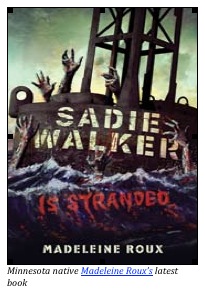?The aim of every artist is to arrest motion, which is life, by artificial means and hold it fixed so that a hundred years later, when a stranger looks at it, it moves again since it is life.?
~William Faulkner, Author and Nobel Prize Laureate.
Part I: The Big Picture.
As an estate planning attorney, I like the idea that I help clients ?arrest motion? by codifying their desires in a present moment for some, hopefully distant, future when they are no longer able to voice those desires. I find this description particularly appropriate when working with artist clients. Estate planning for artists is an area of the law plagued with nooks and crannies that even well established and highly respected estate planning attorneys can easily miss. It is simply a fact that, due to lack of exposure, many estate planning attorneys may not be versed in the unique complexities that are involved in planning for the artist. In colloquial terms, they don?t know what they don?t know.
This seven-part series will shed light on some of these artist-centric estate planning issues. Accordingly, the series has a two-fold agenda:
- The first goal is to arm artist clients with the knowledge needed to identify an adequate attorney who can best address these unique estate planning needs.
- The second goal is to provide the estate planning attorney unfamiliar with the specific planning concerns of artists with information to help them better recognize and address the needs of these very special clients.
This topic area, like so many others that fall under the heading of ?Estate Planning? is complex. An article, book, or law school class could be dedicated to almost any single subject area mentioned in this series. Therefore, the reader is encouraged to view the series as an introduction to the subject matter and its biggest components as well as a springing point to inspire further study. Since this series is focused on the world of creativity, it has been organized according to the Six W?s of Writing? ? Who, What, When, Where, Why and How.? Many may remember these fondly, or maybe not so fondly, from high school English class.
Admittedly, the term ?artist? can be ambiguous. One of the several definitions that Merriam-Webster.com provides for ?artist? is ?one who practices an imaginative art.? For the purposes of this article, this seems a fitting description. ?Artist? shall include visual and performing artists, as well as writers, designers, animators, and, generally, anyone involved in producing a creative body of work.
To a greater degree, attorneys should be aware that the issues addressed in this series may also apply when working with any client who falls under the heading of the ?creative class? as coined by Richard Florida in his groundbreaking and, now, classic The Rise of the Creative Class, which includes everything from graphic designers to video game developers. However, this article is primarily aimed at that group which has most traditionally been considered ?artists? and will pinpoint examples specific to the particular area of art where appropriate.
On a personal note, a family friend, who was also a retired judge, once shared with me one of the biggest lessons he learned over his many years on the bench. In his long Texas drawl, he said, ?If there is one thing that attorneys hate more than admitting a mistake, it?s admitting they don?t know something.? As an attorney, I like to think my fellow members of the bar and I constantly strive to deepen our well of knowledge. In that respect, both the attorney and artist should take away the following seven items from this series:

- Why it is so important for an artist to create an estate plan;
- Who the unique players are and their roles in managing the estate of an artist;
- What the special layers of rights and assets may be in the artist?s estate;
- When an artist should begin the planning process;
- Where an artist should contemplate formalizing an estate plan;
- How a few estate planning tools can address the artist?s estate planning needs; and
- Homework items an artist can start immediately to minimize estate issues.
Part II of this series will identify the need of estate planning for artists, both by showing that a market exists and defining the importance of planning for artist clients.
Source: http://epilawg.com/2012/02/arresting-motion-estate-planning-for-artists/
amber rose natalie wood van halen annalynne mccord billy the kid neville neville
No comments:
Post a Comment
Note: Only a member of this blog may post a comment.